Quadriceps muscles
Introduction
Four muscles in the front of the thigh are called the quadriceps, or quads. They are some of the body’s biggest and most powerful muscles. The quadriceps muscles allow you to stand, walk, run, squat, and jump. They are some of the strongest muscles in the body and together they comprise most of the thigh.
The Latin origin of the term quadriceps is “four-headed.” This is because this muscle group is divided into four different parts that cooperate to aid in leg extension. The quadriceps consists of four muscles:
- The Rectus Femoris
- The vastus lateralis
- Vastus intermedius and medialis.
Definition
The quadriceps femoris, or main bulk of the thigh, are one of the body’s densest and most powerful muscle groups.
Experts can subdivide the muscles of the thigh into three compartments.
- Front (anterior),
- inner (medial), and
- posterior(the back of the thigh)
The quadriceps is part of the anterior compartment, which also includes the sartorius and iliopsoas muscles. extends the leg at the knee, providing stability and movement.
Anatomy of quadriceps muscles
Vastus Lateralis
- Origin: The intertrochanteric line, greater trochanter, gluteal tuberosity, and femoral linea aspera
- Insertion: Tibial tuberosity (via patellar ligament), patella (lateral condyle of the tibia).
- Action: Stabilises the patella and extends the knee joint.
Vastus Intermedius
- Origin: Anterior surface of the femoral shaft.
- Insertion: Tibial tuberosity (via patellar ligament), patella (lateral condyle of the tibia)
- Action: Stabilises the patella and extends the knee joint.
Vastus medialis
- Origin: medial supracondylar line of the femur, Intertrochanteric line, pectineal line of the femur, linea aspera.
- Insertion: Tibial tuberosity, and patella (medial condyle of the tibia)
- Actions: Because of the horizontal fibres at the distal end, the knee joint is extended and the patella is stabilised.
Rectus femoris
- Origin: Anterior inferior iliac spine, supraacetauluar groove.
- Insertion: Tibial tuberosity, and patella.
- Actions: The only quadriceps muscle that crosses the hip and knee joints. It flexes the thigh at the hip and extends to the knee joints.
Nerve
The femoral nerve innervates these muscles. (L2, L3, L4)
Artery
Lateral femoral circumflex artery.
Embryology
The limb buds emerge from the ventrolateral surface of the body wall. The gems are made up of somatopleural mesenchyme and an apical ectodermal crest. The hypomere (ventral part of a somite’s myotome) cells migrate from the somite into the buds to form muscle cells. The somatopleural mesenchyme provides the connective tissue for the limbs. Around the fifth week of pregnancy, this happens. The gems rotate approximately 90 degrees medially along a longitudinal axis. This movement of the knee area will occur in the front.
Blood Supply
The femoral artery provides nourishment to the quadriceps muscle. It is the continuation of the external iliac artery (behind the inguinal ligament). It becomes the popliteus artery after passing through the anteromedial region of the thigh and the adductor channel ring. The femoral artery can be imagined as a straight line that connects the centre of the inguinal canal to the posterior portion of the femur’s medial condyle. Among the most important branches of the quadriceps muscle are the superficial and deep femoral arteries.
The femoral vein is a continuation of the popliteal vein that travels up the femoral artery to the inguinal ligament before becoming the external iliac vein.
Anatomical variation
Numerous morphological variations that deviate from the classical description have recently raised doubts about the quadriceps femoris’s classical anatomy. As a result, information must be gathered before an agreement on its structure can be reached. For this, a systematic review was conducted using the Web of Science, Pubmed, and ProQuest scientific databases, yielding a total of 29 papers that were eventually included in the systematic review after meeting inclusion and exclusion criteria.
The findings revealed a significant and variable prevalence of newly described configurations, such as additional heads in the rectus femoris, a different origin of the vastus intermedius, and various portions. of the vastus lateralis, and involvement of the vastus medialis in the patellofemoral musculature. As a result, understanding the anatomy of the quadriceps femoris is a topic that has yet to be fully resolved, with significant variability among individuals that must be investigated before the use of an invasive and/or surgical procedure.
Function of quadriceps muscles
The quadriceps’ primary functions are to extend the leg at the knee and flex the thigh at the hip joint. They also help to stabilise the knee by keeping the patella inside a groove in the femur, or thigh bone. The quadriceps are most active during jumping, running, and kicking movements. They aid in everyday activities such as walking, sitting up in a chair, and climbing stairs.
The quadriceps muscles oppose the hamstring muscles, which are located in the back of the thigh. When one muscle group contracts, another relaxes, allowing the knee to flex and extend. When the hamstrings contract, the knee joint flexes (bends), while the quadriceps contract and the leg extends (straightens).
Common injuries of quadriceps muscles
Quadriceps injuries are more common in athletes, particularly those who run, jump, or kick, such as in football, soccer, basketball, and softball.
Furthermore, patients are more likely to experience quadriceps pain and injuries if they:
- Are 40 or older.
- Have specific diseases such as multiple sclerosis, gout, diabetes, or rheumatoid arthritis.
- Individuals with a history of quadriceps injuries, inadequate exercise, or use of medications that weaken muscles and tendons may be at risk.
Because the quadriceps are active during a wide range of movement and physical activities, injuries caused by overuse, overstretching, or trauma are common. Some common quadriceps injuries could include:
Tears
A quadriceps tear occurs when a tendon is either partially or completely severed. It is a strain-like injury that causes overstretching and tearing. In some cases, the injury begins as a partial tear, with the tendon fraying, but progresses to a complete tear. This damage may cause the muscles to detach from the kneecap, preventing a person from straightening their knee.
Following a quadriceps tendon tear, a person may hear a popping sound as well as experience pain and swelling. They may also notice a gap at the top of the kneecap, where the tendon ruptured. Options for treatment include surgery, physical therapy, and rest.
Tendinopathy
Tendinopathy refers to tendon injuries that cause pain, swelling, and impaired function due to overuse. Tendons are thick tissues that connect bones to muscles. In the case of the quads, they connect the muscles to the patella. Tendinopathy is classified into two types: tendinitis and tendinosis.
Tendinitis refers to tendon inflammation, whereas tendinosis is tendon degeneration. Both injuries are painful and can result in a loss of flexibility. While the RICE method can help with recovery, a person may need injections or surgery to treat tendinosis.
Contusions
A contusion, also known as a bruise, is often caused by an impact on the thigh, compressing the muscles against the hard surface of this part of the leg. As a result, the trauma may cause bruising and inflammation. It is a common injury in many impact sports that can cause pain and limit range of motion.
This type of injury is typically treated with rest, ice, compression, and elevation, also known as the RICE method. Additionally, light stretching may aid in the restoration of a full range of motion.
Strains
Another common and painful sports injury is a pulled quad, which occurs when an athlete performs sudden, forceful leg movements. It occurs when a person overstretches a muscle or tendon, typically due to fatigue, overuse, or improper use.
Thigh strains can vary from mild to severe.
- Grade 1: Muscle fibres stretch or tear slightly. You may experience mild thigh muscle pain or swelling, but you can continue to use your leg.
- Grade 2: These are the more severe quad muscle tears. They can cause severe pain and loss of strength. Maybe you’re not able to support any weight on your leg.
- Grade 3: The quad tendon ruptures, which means it completely separates from your kneecap or the muscle tears away from the tendon. You’re unable to use your leg due to severe pain and swelling. If your quadriceps muscle is torn, you may notice a defect under your skin.
This injury may limit movement, and treatment typically includes the RICE method and anti-inflammatory medications. People can try to avoid quad strains by conditioning their muscles through regular exercise and properly warming up and cooling down before and after exercise.
Lacerations
An open wound that breaks the skin of your thigh can injure your quadriceps or tendon. A laceration could be the result of a fall, a car accident, or a traumatic sports injury.
Knee cap dislocation
Kneecap dislocation occurs when the quadriceps muscle tears off the bone below the kneecap, causing it to slip out of its groove. This is almost always caused by trauma, such as a sporting injury or a fall.
When the injury occurs, you may experience a “popping” sensation and severe knee pain. The knee swells up quickly, making it difficult and painful to straighten the joint.
Dislocated kneecaps frequently pop themselves back into place. Even so, you should consult your doctor to be sure.
If the kneecap does not correct itself, your doctor will manipulate it back into place. They will perform an X-ray of your knee to look for fractures or ligament tears.
You may be prescribed a brace to stabilise your knee, as well as physical therapy. If your knee has dislocated several times, or if there is a fracture or ligament tear, you may require surgery. A knee brace will be used, as well as physical therapy.
Patellofemoral syndrome
Excessive running and jumping can cause inflammation under the kneecap, known as patellofemoral stress syndrome. When this occurs, the quadriceps are unable to stabilise the kneecap, causing it to rub against its groove.
This chronic overuse injury causes pain and swelling in the front of the knee and beneath the kneecap, which worsens when walking down the stairs or downhill.
The first step in treating PFSS is to take RICE. You will need to rest your knee and avoid activities that aggravate your pain. NSAIDs can be used as needed to relieve pain and swelling.
Physical therapy is frequently recommended to strengthen the muscles that support the knee and avoid future problems. A physical therapist may prescribe a knee brace or show you how to tape your knee to alleviate pain while exercising. Orthotic shoe inserts can also help stabilise your knee.
Iliotibial band syndrome
The iliotibial band is a long tendon that runs down the outside of your thigh from your hip to your shin. The iliotibial band syndrome occurs when this tendon rubs against the hip or knee bones, causing pain and inflammation on the outside of the knee.
This can happen if your quadriceps are extremely tight or weak, or if your hamstrings are weaker than your quadriceps. Excessive knee bending, such as when running or cycling, can also cause it.
The first step in treating iliotibial band friction syndrome is to rest the knee, avoid activities that worsen the pain, and ice the outside of the knee. NSAIDs can reduce pain and inflammation.
If your pain is severe, your doctor may suggest cortisone injections to reduce inflammation. In certain situations, physical therapy is advised.
Surgery may be recommended if other treatments do not improve your condition within six months. The part of the iliotibial band that rubs against the femur is removed during surgery.
Assessment of quadriceps muscles
- A comprehensive history should be taken before doing a careful examination that includes motion evaluation, palpation, strength testing, and observation. Quadriceps strain injuries can result in an obvious deformity, such as a bulge or defect in the muscle belly.
- When palpating the anterior thigh, one should feel for any muscle abnormalities, locate the site of maximum sensitivity, and trace the length of the injured muscle.
- Strength testing of the quadriceps should include resistance to knee extension and hip flexion. With the hips flexed and extended, resisted knee extension is a necessary component of an accurate rectus femoris strength test. It is practically best to assess the patient while they are both sitting and prone-lying. The patient is asked to extend their leg (at the knee) against resistance. If the femoral nerve is damaged, the quadriceps femoris muscles will not contract. The prone-lying position also allows for an accurate assessment of quadriceps motion and flexibility.
- The patient usually experiences pain when direct palpation of the muscle strain, passive stretching, and resisted muscle activation are performed.
- When a muscle injury occurs, its strength, palpable defects, and level of tenderness are evaluated to help classify the damage and provide guidance for further diagnostic procedures and care.
- Check for individual muscle head imbalances, which may result in patella tracking issues.
- Patella Glidings. Check for muscle imbalances, for example. Runners frequently develop an imbalance of strong hamstring muscles and underdeveloped quadriceps.
- In situations where nerve palsy is suspected, the femoral nerve can be evaluated using the quadriceps femoris muscle.
- Functional tests include the Timed Up and Go test (TUG) and a timed Stair Climbing Test (SCT).
Physiotherapy treatment
The primary physical therapy exercises used to improve the function and health of your quadriceps are:
Strength: Because the quadriceps muscles cross the hip and knee, exercises involving the knee and hip are required to improve quad strength. While advanced hip strengthening exercises primarily work the quadriceps, simple knee strengthening exercises will primarily target the quads.
Flexibility: There are several simple stretches you can do to improve the flexibility of your quadriceps muscles. It’s critical to be gentle and pay attention to your pain so you don’t overstretch your knee and cause further damage.
Balance and proprioception: Exercises focusing on body position awareness and balance and proprioception often work the quadriceps, which are crucial for maintaining an upright posture and balance. Basic balance exercises can also help to prevent falls, while advanced balance exercises can help with quad injuries and knee pain.
Your physical therapist can recommend the best exercises to help your specific condition.
Quadriceps exercises
There are numerous exercises that people can perform to condition and strengthen their quadriceps. However, before exercising, it is recommended to do a quick warm-up and stretch to help encourage blood flow in the area.
For the quadriceps, do 5-10 minutes of walking followed by a standing or prone squad stretch. This stretch entails bending the knee and bringing the heel towards the buttocks. A person then grabs their ankle, gently pulls it closer to their body, and holds it for 30 to 60 seconds.
Here are some quadriceps exercises you can try:
Squats
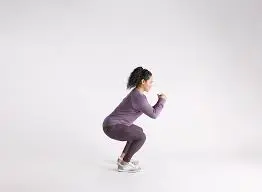
To do a squat:
- Place the feet slightly wider than shoulder-width apart.
- Sit with your chest raised and your back straight.
- Continue to squat until the hips are below the knees.
- Then, press your feet into the ground and push your hips forward to return to the start position.
- People can squat with their body weight or a barbell for added weight.
Lunges
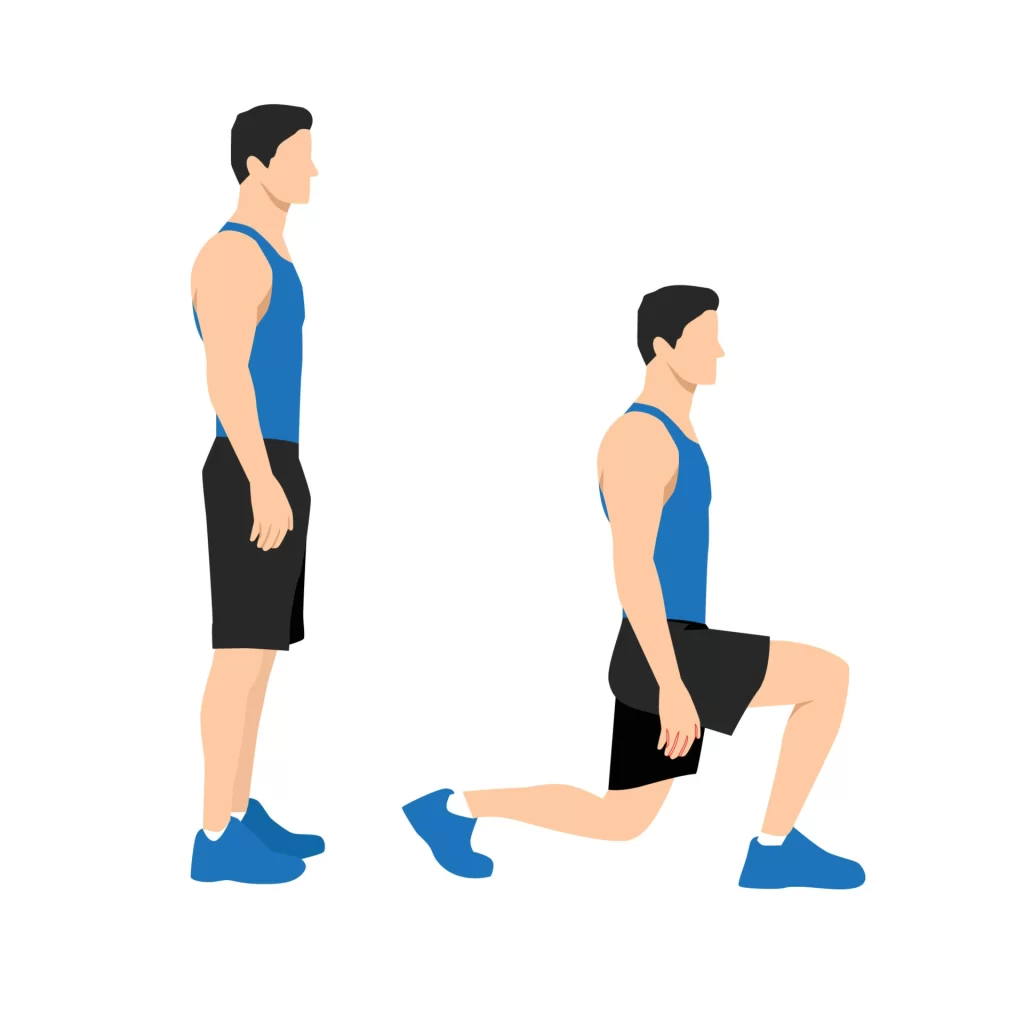
To make a lunge:
- Begin with your feet roughly hip-width apart.
- Step forward with your right leg, then lower your left knee close to the ground without touching it.
- Push through the right foot to return the left leg to its starting position.
- Repeat the exercise with the opposite foot.
- People can also do lunges with their body weight or additional weights.
Leg Press
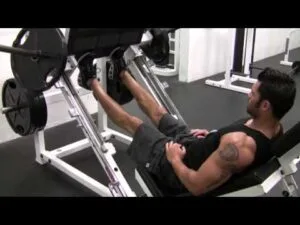
A seated leg press is another type of gym equipment. For this exercise:
- Choose an appropriate weight, then sit on the machine with your feet against the resistance plate.
- To push the plate away, contract the quadriceps muscles.
- After a brief pause, flex and let the plate return in a gradual, controlled motion to bring it back to the starting position.
Leg extension
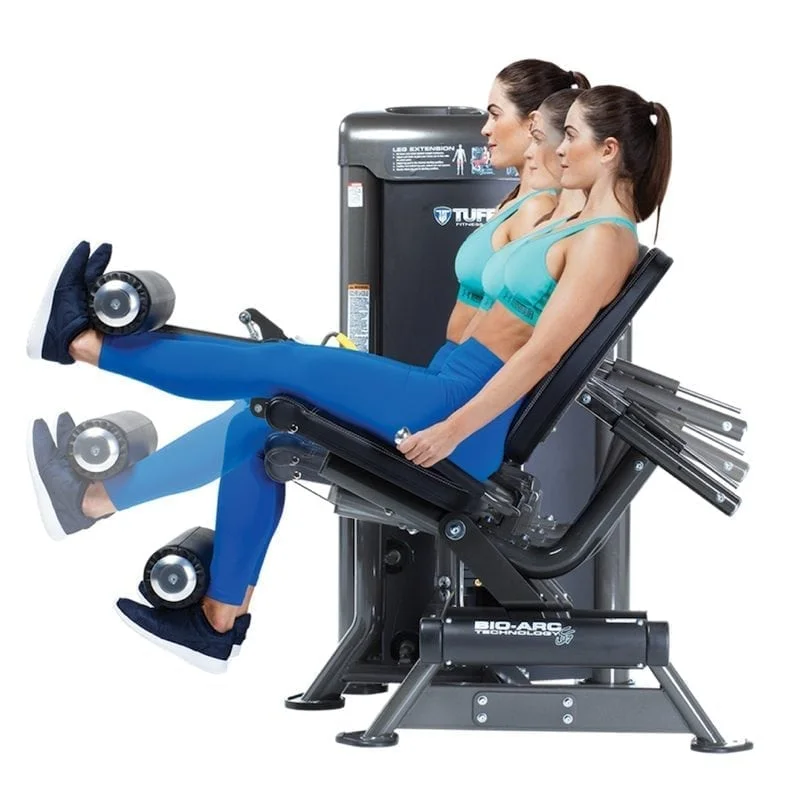
A seated leg extension is a type of weight machine that is commonly found in gyms. After choosing an appropriate weight, a person sits on the machine with their feet behind the bar. The quad muscles can then be extended to straighten the leg and held there before gradually returning to the starting position.
Quad stretches.
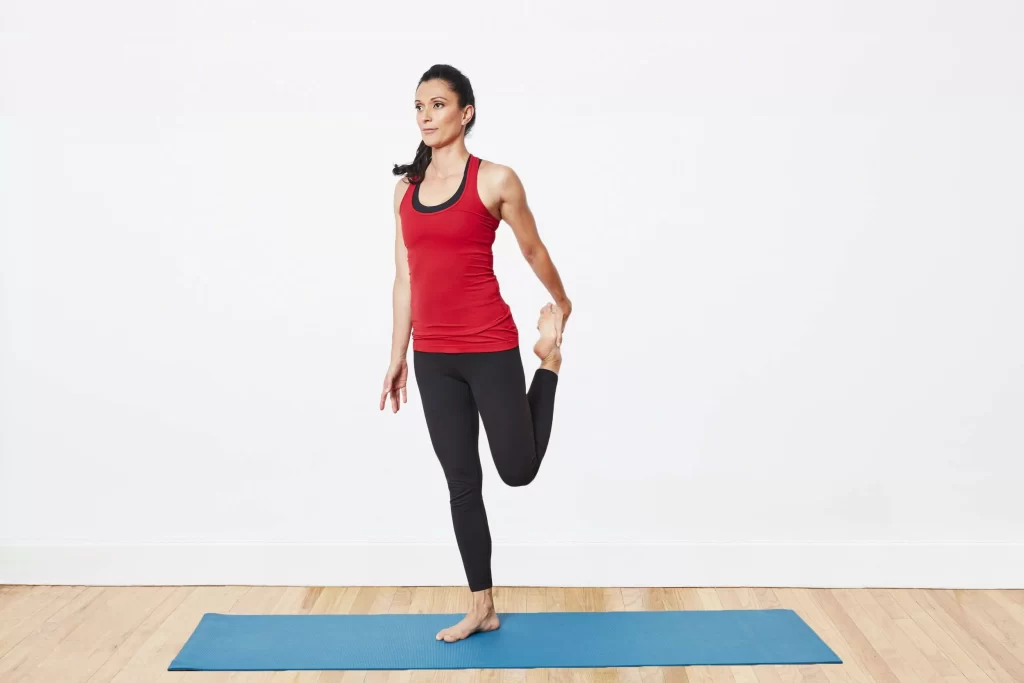
Experts sometimes disagree on how much and what type of stretching is required before running or engaging in other forms of exercise.
However, doing a few gentle stretching exercises before and after exercise can help you loosen your muscles and increase your range of motion.
Try the basic quad stretch:
- Stand on one leg. Using a chair or the wall will help you maintain your balance.
- Raise the other foot behind you, keeping your leg bent at the knee.
- Try touching your foot to your buttocks.
- Release your foot to the ground after holding it for a brief period.
The kneeling stretch is also an effective quad stretch. To perform this exercise:
- Kneel on one knee and lean out over it, extending your knee over your foot.
- After that repeat on the other side by switching both legs.
Deadlifts
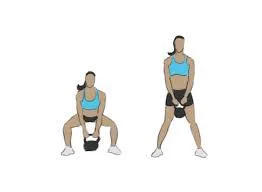
This quad-building exercise requires some equipment, such as kettlebells or a barbell with removable weights.
Deadlifts strengthen your quads, glutes, and back muscles.
To perform this exercise:
- Stand with your feet shoulder-width apart and two kettlebells on the ground, just outside of each foot.
- Bend your knees and push your hips backward to engage your abdominal muscles.
- Lower your hips until your hands are at the kettlebell handles.
- Grip the kettlebells firmly while keeping your arms and back straight.
- Holding the kettlebell handles, slowly raise your body until you are standing straight.
- Pause and inhale before lowering your body until the kettlebells touch the ground, then stand back up while holding the kettlebells.
- Repeat the exercise 6–10 times. By using heavier weights, you can increase the difficulty of this exercise.
Keeping your quads healthy.
However, there are a few things you can do to keep your quadriceps healthy. This includes:
- Getting adequate rest between workouts and exertion periods
- Avoid pushing through pain in your knees, hips, and legs.
- Stretching your quadriceps muscles before any activity
Summary
The quadriceps, or quads, are four powerful muscles in the front of the thigh that enable various activities such as standing, walking, running, squatting, and jumping. Originating from the Latin term “four-headed,” these muscles are divided into four parts: Rectus Femoris, vastus lateralis, vastus intermedius, and medialis. They are part of the anterior compartment and help stabilize the knee by keeping the patella inside a groove in the femur.
Quadriceps injuries are common in athletes, those aged 40 or older, and those with specific diseases. Common injuries include quadriceps tears, tendinopathy, contusions, strains, lacerations, and kneecap dislocation. Treatment options include surgery, physical therapy, rest, ice, compression, and elevation. Tendinopathy, contusions, strains, lacerations, and kneecap dislocations can result in mild to severe pain, loss of strength, and difficulty in bending the knee.
To prevent quadriceps injuries, it is essential to maintain proper muscle conditioning, avoid lacerations, and consult a doctor for proper diagnosis and treatment. Patellofemoral syndrome, a chronic overuse injury caused by excessive running and jumping, causes inflammation under the kneecap, causing pain and swelling in the front of the knee and beneath the kneecap. Iliotibial band syndrome occurs when the iliotibial band rubs against the hip or knee bones, causing pain and inflammation on the outside of the knee. Treatment involves resting the knee, avoiding activities that worsen pain, and icing the outside of the knee.
A comprehensive history should be taken before conducting a thorough examination, including motion evaluation, palpation, strength testing, and observation. Physiotherapy treatment focuses on strengthening the quadriceps muscles, enhancing flexibility, and promoting balance and proprioception. Quadriceps exercises include squats, lunges, leg presses, leg extensions, quad stretches, and deadlifts.
To improve quadriceps function and health, it is recommended to perform a warm-up and stretch before exercising, such as squats, lunges, leg presses, leg extensions, quad stretches, and deadlifts. Regular stretching exercises can help loosen muscles and increase the range of motion.
FAQs
Exactly why is it called quadriceps?
The quadriceps femoris muscle’s name means “four-headed muscle” in Latin. Its four constituent muscles—the rectus femoris, vastus medialis, vastus lateralis, and vastus intermedius—give it its name. The rectus femoris is the only muscle that crosses both the hip and knee joints.
What could be the root word for quadriceps?
The term “quadriceps” is derived from the Latin root “quad”, which means four. In Latin, the word “quadriceps” means “four-headed,” referring to the four distinct muscles that comprise this muscle group.
Which quadriceps muscle is the most susceptible to injury?
Strains and tears, as well as contusions, are the most common types of injuries. The quadriceps muscles form a group of four. They help you stand, walk, climb, and squat, and they are especially active when kicking, jumping, cycling, and running. This makes them more susceptible to stress and injury in a variety of sports.
What is the initial treatment for quad strain?
Rest the injured area. Apply icepacks to the area for 20 minutes every two waking hours, keeping them separate from the skin with a wet towel. Compress or bandage the injured area firmly, extending the wrap from below to above. Elevate (raise) the injured area above heart level whenever possible.
Where are the quadriceps situated?
Your quadriceps muscles are located at the front of your thigh, above your knee and below your hip. Quad tendons connect them to the pelvis, hip bones, femur (thigh bones), and kneecaps.
What exactly is the purpose of the quadriceps?
Your quadriceps femoris are among the largest and most powerful muscles in your body. Each quad is a group of four muscles in the front of your thigh. These four muscles work together to allow you to stand, walk, run, and move around comfortably. They also stabilise your kneecap.
References:
- Morales-Brown, L. (2023, December 6). What to know about the quadriceps muscles. https://www.medicalnewstoday.com/articles/quadriceps-muscles#summary
- Quadriceps Muscle. (n.d.). Physiopedia. https://www.physio-pedia.com/Quadriceps_Muscle
- Professional, C. C. M. (n.d.). Quad Muscles. Cleveland Clinic. https://my.clevelandclinic.org/health/body/22816-quad-muscles
- What to Know About Your Quadriceps Muscles. (2020, June 16). Healthline. https://www.healthline.com/health/quadriceps
- Pt, B. S. (2023, June 5). The Anatomy of the Quadriceps Muscles. Verywell Health. https://www.verywellhealth.com/what-are-the-quadriceps-muscles-2696379
- Felton, A. (2022, September 2). Quad Muscles: What To Know. WebMD. https://www.webmd.com/fitness-exercise/quad-muscles-what-to-know

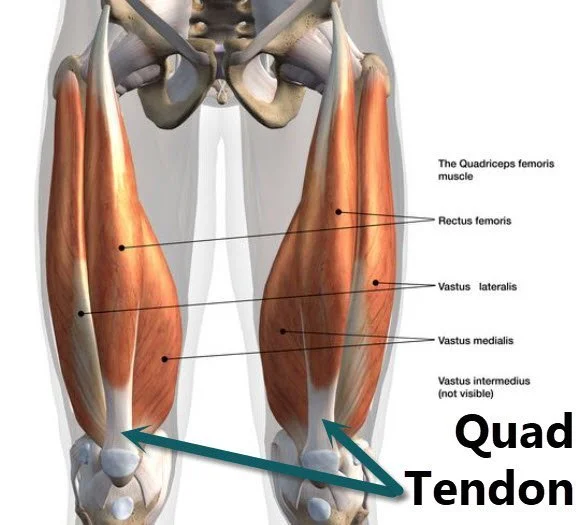
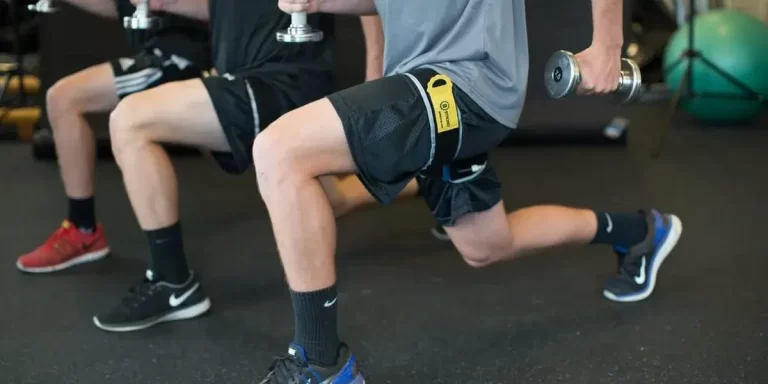
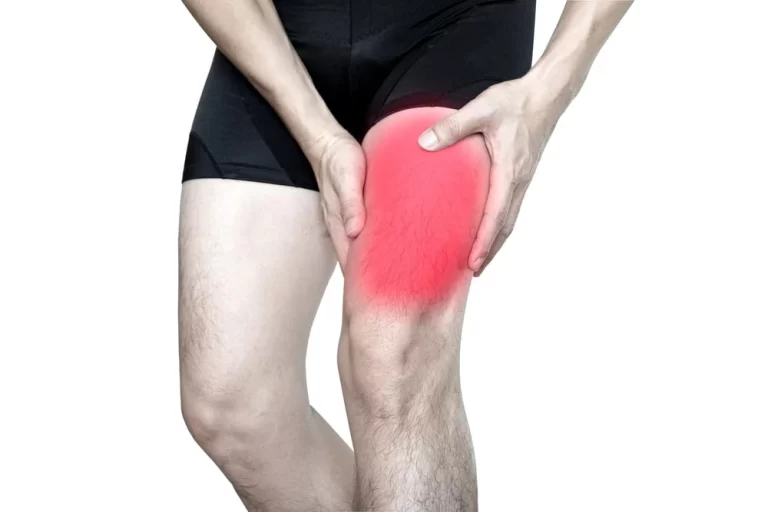

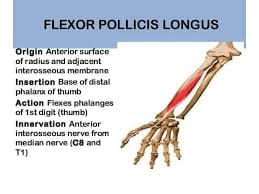
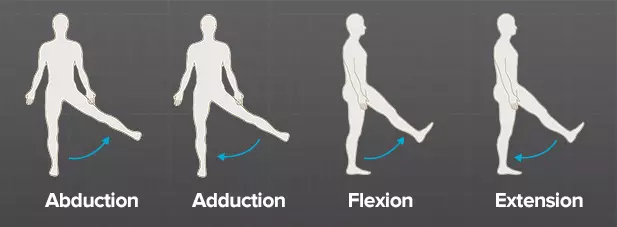
45 Comments